On a day that etched itself into the annals of history, the small Basque town of Guernica was subjected to an air raid that would forever change the course of aerial warfare and artistic expression. This event, deeply tragic in its essence, catalysed a response from Pablo Picasso that transcended the boundaries of art, politics, and human empathy. As we venture into the narrative of Guernica’s bombing and the monumental artwork it inspired, we aim to shed light on the profound impact of this moment, not only on those who lived through it but also on generations to come.
Historical Context
On April 26, 1937, during the height of the Spanish Civil War, the small Basque town of Guernica faced a catastrophic air raid by German and Italian warplanes allied with Francisco Franco's nationalist forces. Meant as a testing ground for new military tactics, the bombing lasted for over three hours, resulting in the destruction of the majority of the town and significant civilian casualties.1 Eyewitness accounts describe the horror of the assault, painting a picture of chaos and devastation that would profoundly impact the global conscience.
Picasso, already a distinguished artist living in Paris at the time, found himself deeply affected by the reports emerging from his homeland. His strong connection to Spain moved him to direct his frustrations and anger into his work, as the atrocity in Guernica became more than just a news item; it served as a tangible instance of the suffering and brutality that technological advances in warfare had brought to civilian populations.
Guernica was chosen to instil terror and demoralization among the Basque population and wider Spanish Republican support, marking a dark evolution in modern military campaigns by highlighting the vulnerability of civilians and the indiscriminate nature of aerial warfare.2
In response, Picasso channeled his artistic prowess into creating Guernica, a painting that was to become an enduring symbol of war's horror and a plea for peace. The sheer scale of the canvas, combined with its dynamic composition of fractured forms and anguished figures, evokes the chaos and violence of the bombing. Through Guernica, Picasso transcended borders, bringing the plight of the Spanish people under Franco's regime to an international stage.
Central to the painting's impact is its monochromatic palette, which starkly contrasts with the theme of violence and suffering. The choice to work in black, white, and greys was intentional, drawing the viewers' focus to the drama played out on the canvas and avoiding any distractions that color might introduce. This technique ensures that the message behind Guernica remains unambiguous – it is a direct challenge to the inhumanity and senseless destruction wrought by war.
Guernica represents a significant moment not only in Picasso's artistic journey but also in the evolution of modern art. It demonstrated how art could serve as a powerful medium for political and social commentary, bridging personal expression and public engagement. Through his depiction of Guernica's bombing, Picasso issued a universal condemnation of violence and an impassioned appeal for peace that resonates to this day.
The cultural and historical significance of Guernica extends beyond its initial reception. Over the years, it has emerged as a poignant reminder of the tragedies of war, serving as an anti-war emblem and influencing countless artists and movements worldwide. Reflecting on the event that inspired such a masterpiece offers deep insights into the costs of conflict and the role of art in memorializing and advocating for humanity.
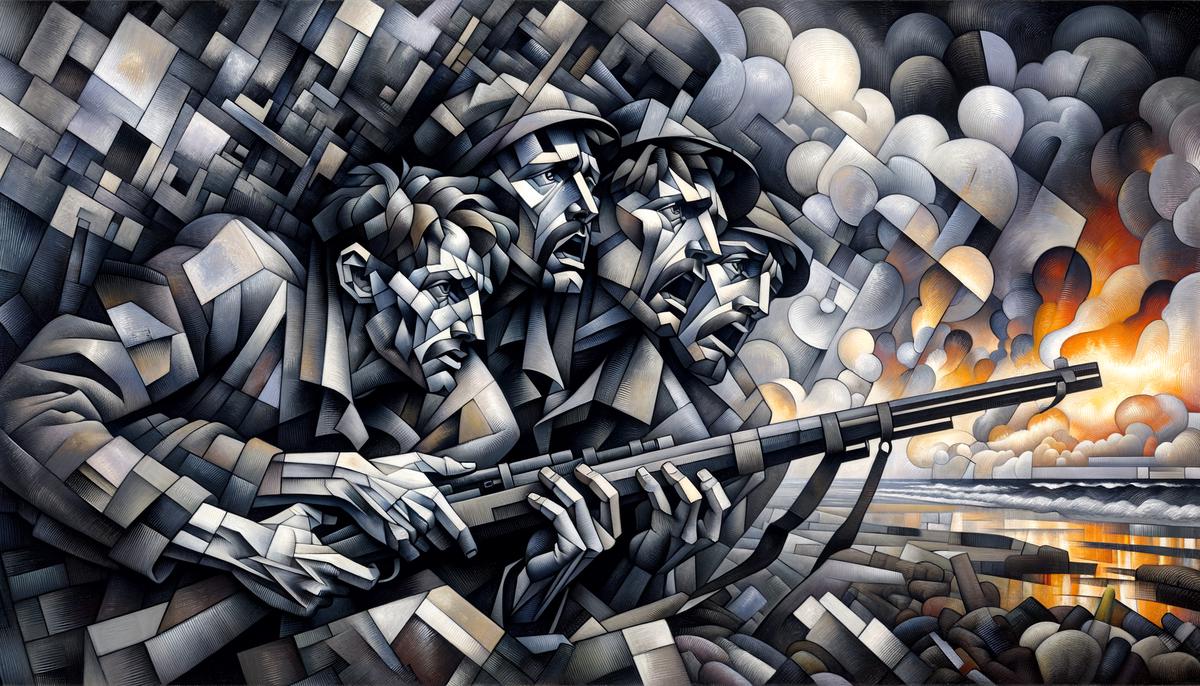
Symbolism
Delving into the heart of "Guernica," we discover a world brimming with symbolism, each element whispering its story of agony, protest, and a call for tranquility. Central to the tapestry Picasso weaves are three powerful figures: the bull, the horse, and the concealing light bulb, all cloaked in shades of grey that speak louder than any burst of color could.
The bull stands at the side, its body cloaked in a veil of calm amidst the storm of chaos unfurling around it. Traditionally a symbol of strength and sturdiness in Spanish culture, the bull's presence here hurls us into a realm of dual interpretations. Some see it as the embodiment of the Spanish people's resilience in the face of adversity, while others argue it represents the brutality and darkness of the totalitarian regimes casting their long shadows over Spain and beyond at the time.3 The bull's gaze, detached yet encompassing, challenges us to decipher its role in this dance of devastation.
Beneath the unforgiving gaze of the bull, the horse screams in torment, its body pierced and writhing, symbolizing the unbearable agony wrought by war. Unlike the stoic bull, the horse is turmoil personified: its distress signals the immediate impact of conflict on both flesh and spirit. The spear impaling the horse has drawn various interpretations – a stark representation of death's arrival or, perhaps, the end of innocence as the horrors of war permeate every layer of society.
Hovering above this scene of despair is the light bulb, a peculiar inclusion that buzzes with modern, unnatural life amidst the traditional chaos below. Its glowing form resembles an eye that sees everything yet offers no solace. Some have proposed that this electric sun signifies the destructive power lurking within humanity's own inventions – that technology, which holds the promise of enlightenment, has instead become an instrument of obliteration.4
The monochrome across this canvas does more than unify the elements; it strips the scene down to its raw essence. Without the distraction of colors, we are left to confront the grim realities etched into every line and shape. This choice elevates the symbols' potency, ensuring their messages are not lost in the visual chorus but instead land with intended gravity.
Flowing through "Guernica" is a vein of stark contrasts:
- Life against death
- Light against dark
- Chaos against silence
These dualities push us to reflect on the yin and yang of human experiences: how closely destruction treads on the heels of creation and how a plea for peace often arises from the depths of conflict. Through "Guernica," Picasso immortalizes not just the tragedy that befell a small town but also channels a timeless reminder of war's capacity to decimate and dehumanize.
In essence, "Guernica" serves not just as a painting but as a canvas of conscience, asking of us to remember, reflect, and aspire for a future untainted by the shadows of past conflicts. Through its profound symbols, it compels us to look beyond the surface and unearth the lingering echoes of pleas for peace amidst tumultuous times.
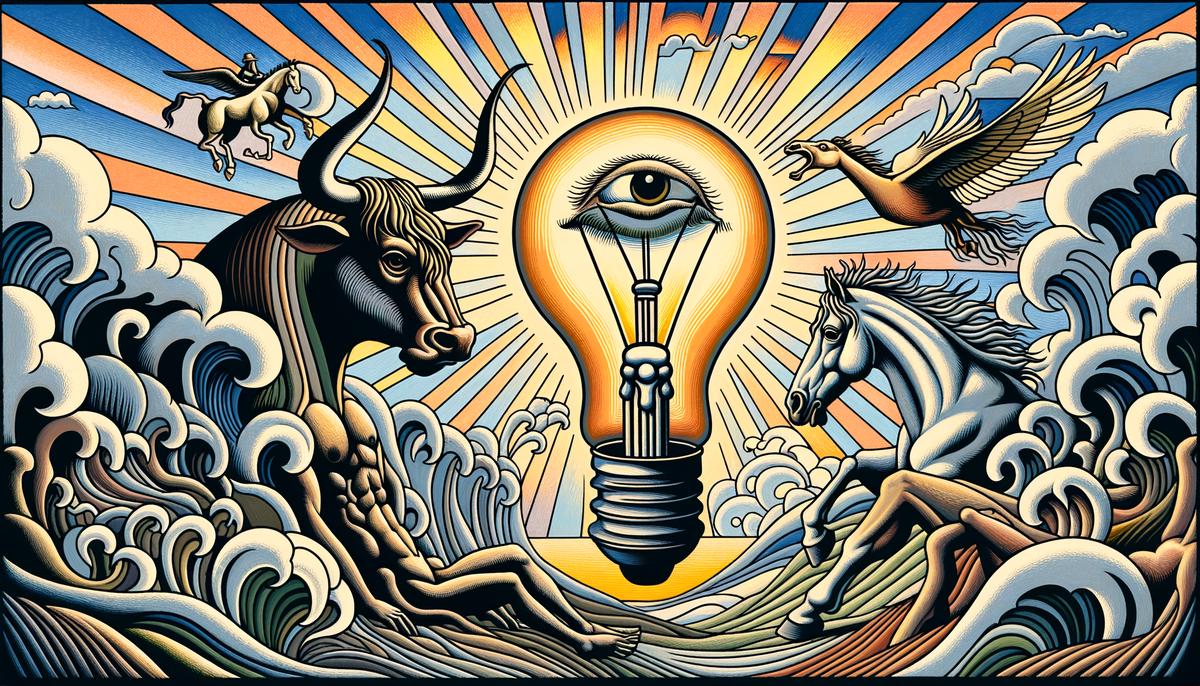
Artistic Techniques
Picasso's melding of Cubism and Surrealism in Guernica crafts a disorienting, dream-like quality that conveys the chaos of warfare. Through Cubism, multi-angled perspectives on single figures break conventional perceptions of space and form, making viewers work to piece together the narrative amidst fractured geometries.5 This fragmentation mirrors the disintegration of the ordinary world into war's disorder. Adopting Surrealism's dream-like distortions, Picasso heightens the emotional resonance, portraying suffering not as a direct reportage but as a vivid nightmare experienced by humanity at large.
The large scale of Guernica envelops observers, drawing them into its shattered realm. The expansive canvas, devoid of color, amplifies the tension between illumination and darkness. This wrestle of light and shadow punctuates the anguish and ephemeral glimmers of hope amidst suffering. The towering size forces an unavoidable confrontation with the scenes of devastation, propelling the narrative into the personal space of the viewer.
Through technical mastery, Picasso layers elements at varying depths, leading the eye across the canvas in a deliberate choreography of shock and reflection. Guernica's composition—a chaotic entanglement of victims and aggressors—uses juxtaposition to potentiate stark emotional reactions. The bull's calm contrast against the horse's torment casts a dramatic foil set within this calamity. By placing harrowing images alongside calmer counterparts, Picasso underscores the surreal coexistence of daily life with violence.
The spatial treatment in Guernica showcases areas thick with tension against sparse voids, reflecting the vacuity left by loss. Each figure's placement heightens the storytelling, guiding viewers through a visceral journey of grief and outcry. This interplay navigates the fine line between abstraction and representational art, leaving room for individual interpretation while conveying a collective lament.
In exercising these artistic prerogatives, Guernica stands as more than a historical echo; it serves as a timeless reflection on the universality of suffering in war, engaging each viewer in a deeply personal way through Picasso's technical and stylistic innovations. Its profound impact transcends its own era, continuing to evoke powerful reactions in the context of contemporary conflicts. The shadowy delineations and tangled compositions become a universal language of despair and a beacon for peace across generations, cementing its place as a pivotal composition in the art world and beyond.
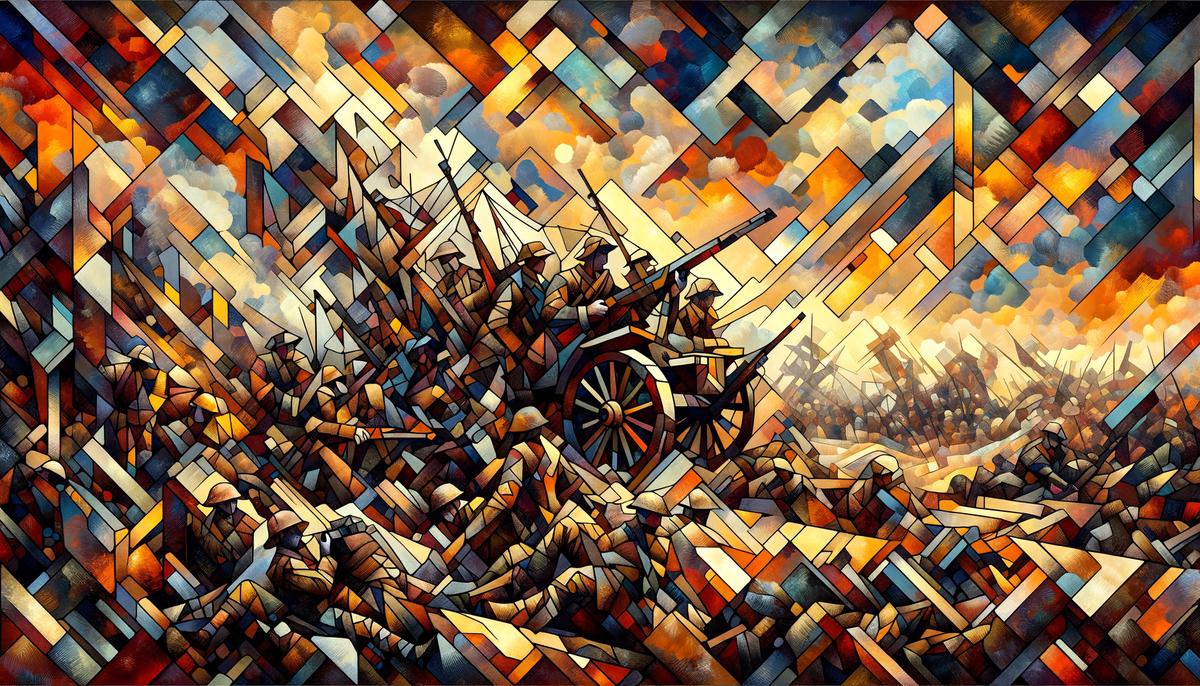
Public and Critical Reception
When Guernica was first unveiled at the Paris International Exposition in 1937, it stood as a vivid declaration against the brutalities of the Spanish Civil War. Attendees of the exhibition were confronted by its monumental scale and the chaos depicted, leaving many shocked and bewildered. Critics initially grappled with the work's stark departure from traditional aesthetics, its bold political statement, and its complex symbology. Despite these challenges, the painting quickly garnered attention, sparking heated discussions within and beyond art circles.
The initial reception was polarized. Some praised Picasso for his boldness in using art as a political weapon, while others criticized him for abstracting suffering, fearing the message might be obscured by the painting's complexity and unconventional style. Guernica's monochromatic scale, expressing the painting's gravitas, became a focal point of discussion. Its lack of color was perceived by some as draining the event of its full horror, while others believed it captured the essence and trauma of war more effectively than any color could have.6
As it embarked on a tour across Europe and the United States, Guernica became a symbol for antifascist movements. Its depiction of the horrors of war resonated globally, transcending the specific historical context of the Spanish Civil War to communicate a universal message against tyranny and aggression. This helped elevate the painting from a piece of political commentary to a powerful symbol of peace and an indictment of all war.
In the years following World War II, Guernica continued to gain reverence as a masterful work of art and a poignant reminder of war's devastation. Its influence seeped into various domains, shaping anti-war movements and inspiring generations of artists. Critics began to regard it not only as a political statement but as a revolutionary step in the evolution of modern art. Its techniques and stylistic innovations contributed to ongoing debates about the role of art in society and its potential to effect change.
As contemporary conflicts emerged around the globe, Guernica embodied the timeless horror of war, retaining its relevance and sway over public sentiment. Its portrayal of anguish and destruction continued to echo the fears and truths of newer wars, reinforcing its significance beyond its immediate historical moment.
Today, Guernica holds an esteemed place in museums, heralded not only for its artistic merit but for its historic significance and its enduring appeal as a universal call for peace. Critics and historians alike analyze it, delving into its complexity, exploring its capacity to convey profound messages through abstraction, and celebrating its influence on the trajectory of 20th-century art.
In educational settings, Guernica serves as a critical tool for teaching about the Spanish Civil War, artistic expression, and the power of visual media in shaping public opinion. The conversation around Guernica has evolved from initial skepticism to widespread recognition of its legacy as a profound artistic achievement. This ongoing dialogue attests to the painting's capacity to evoke rich and diverse interpretations, underscoring its stature as a timeless masterpiece that continues to provoke thought, stir emotions, and inspire action against war and oppression across generations.
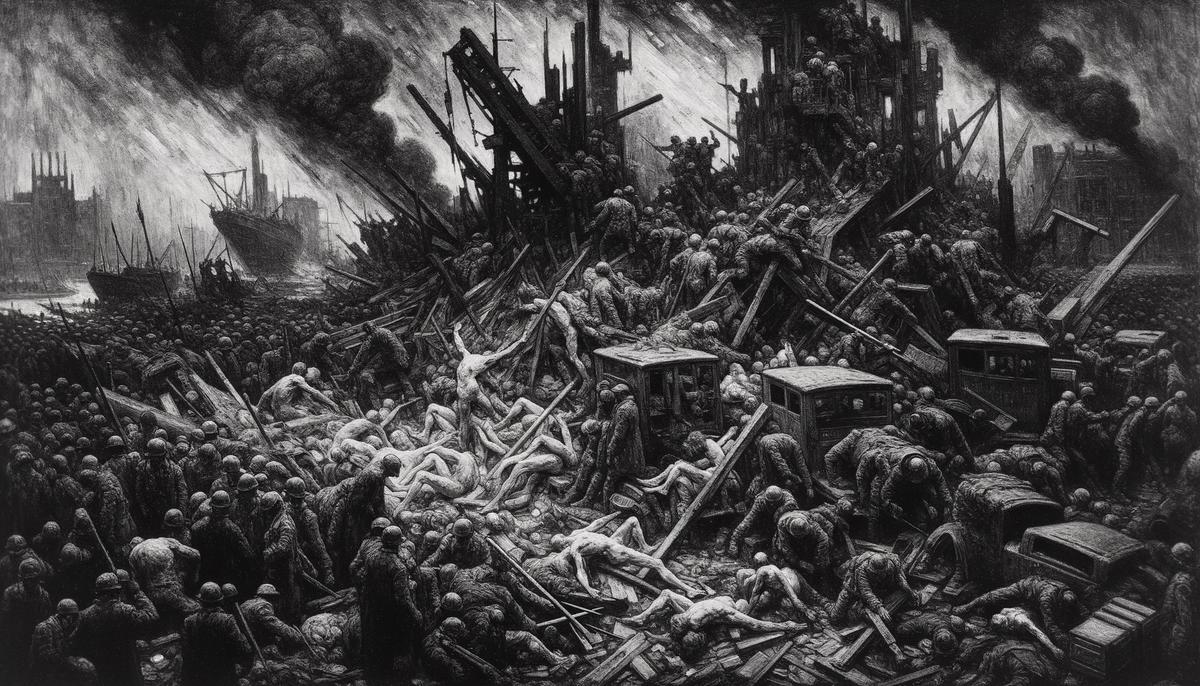
Guernica’s Legacy
Guernica's echoing relevancy in today's digital age manifests through its widespread reproduction and distribution across various platforms, nurturing a continued discourse on peace and violence. The accessibility of the artwork online enables it to reach a global audience, extending its legacy as an emblem of anti-war sentiment beyond the confines of galleries and textbooks.
In educational contexts, Guernica serves as a focal point for discussions around the ethical implications of war, the power of visual media in social and political activism, and the evolution of artistic expression in response to human suffering. Schools and universities leverage the painting as a multidisciplinary tool, bridging history, art, and ethics in a way that encourages students to critically engage with past and present conflicts.
Social and political activists often draw parallels between the bombing of Guernica and contemporary conflicts, using Picasso's masterpiece as a symbol to rally against modern warfare, humanitarian crises, and injustice. The imagery of Guernica is appropriated in posters, banners, and digital campaigns, illustrating the timeless relevance of its message against the backdrop of new struggles.7
Artists across genres find inspiration in Guernica's stark representation of trauma and chaos. This has fostered a rich tradition of artistic works that reflect on themes of conflict, loss, and reconciliation, paying homage to Picasso's influence while addressing current issues.
The mural's role in peace movements underscores its utility not just as a historical artifact but as a living testament to the horrors of war. Peace organizations worldwide adopt the imagery and ethos of Guernica in their efforts to promote non-violence and conflict resolution, attesting to the painting's enduring appeal as a beacon for peace.
On social media, Guernica fosters an interactive space where individuals can share personal reflections, scholarly analyses, and creative interpretations of the artwork. These online discussions contribute to a collective memory that sustains the legacy of Guernica, making its lessons and warnings accessible to a generation far removed from the events of 1937.
Public exhibitions and virtual tours dedicated to Guernica play a crucial role in preserving its historical context while inviting contemporary critique and admiration. These platforms not only educate but also provoke a deeper understanding of the importance of safeguarding human rights and dignity in times of conflict.
Guernica's legacy in contemporary society permeates art, education, activism, and digital culture, forging connections between past atrocities and today's challenges. As a testament to the abhorrence of war and as a plea for peace, it remains profoundly relevant, prompting us to reflect on our collective responsibility to prevent such tragedies from recurring. Through ongoing engagement with this iconic work, we reaffirm our commitment to a more just and peaceful world.
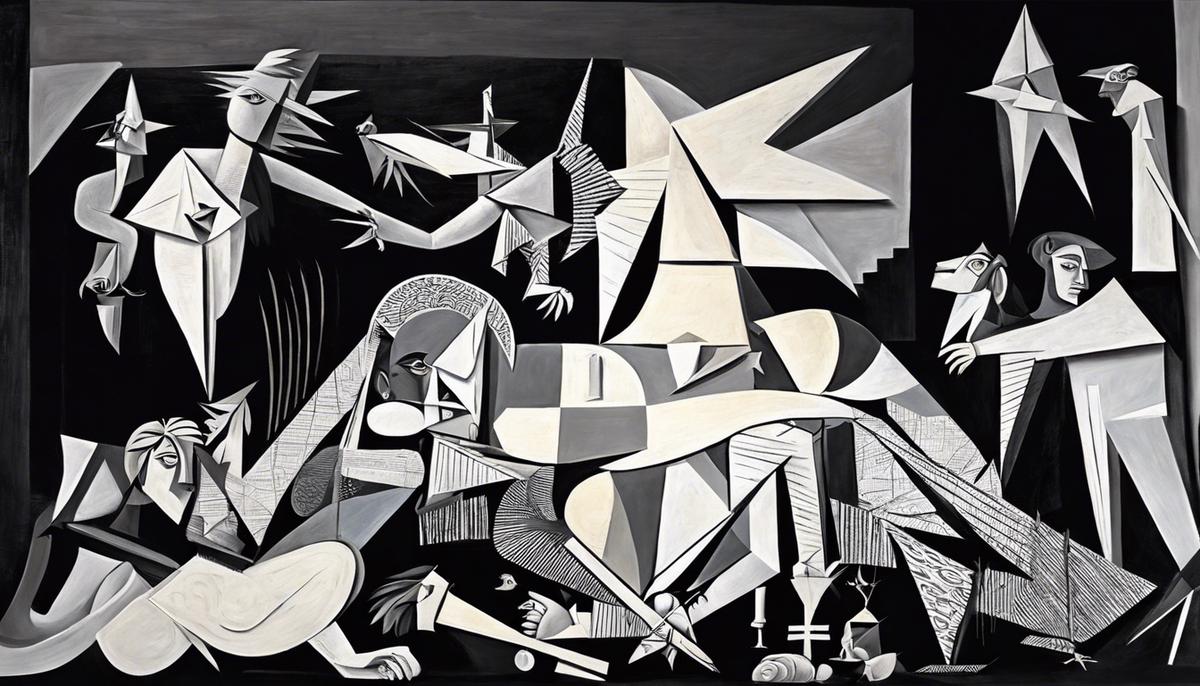
In essence, the legacy of Picasso’s Guernica extends far beyond its immediate historical context, serving as a perpetual reminder of the atrocities of war and the enduring human spirit that rises in opposition. Through this masterpiece, Picasso not only immortalised the tragedy of Guernica but also issued a timeless appeal for peace and humanity. It stands as a testament to the power of art to convey deep emotional truths and to challenge us to reflect on our collective responsibility towards each other in times of conflict and peace alike.
- Patterson D. Guernica and total war. Cambridge, MA: Harvard University Press; 2007.
- Beevor A. The battle for Spain: the Spanish Civil War 1936-1939. New York: Penguin Books; 2006.
- Harris JC. Guernica. Arch Gen Psychiatry. 2005;62(2):119-120.
- Held J. How the horrors of Guernica led Picasso to paint his masterpiece. Artsy. https://www.artsy.net/article/artsy-editorial-horrors-guernica-led-picasso-paint-masterpiece. Published April 26, 2017.
- Barr AH. Picasso: fifty years of his art. New York: Museum of Modern Art; 1946.
- Van Hensbergen G. Guernica: the biography of a twentieth-century icon. New York: Bloomsbury; 2004.
- Schaller DJ. From the editors: lessons from "Guernica". J Educ Media Mem Stud. 2011;4(2):123-130.
























